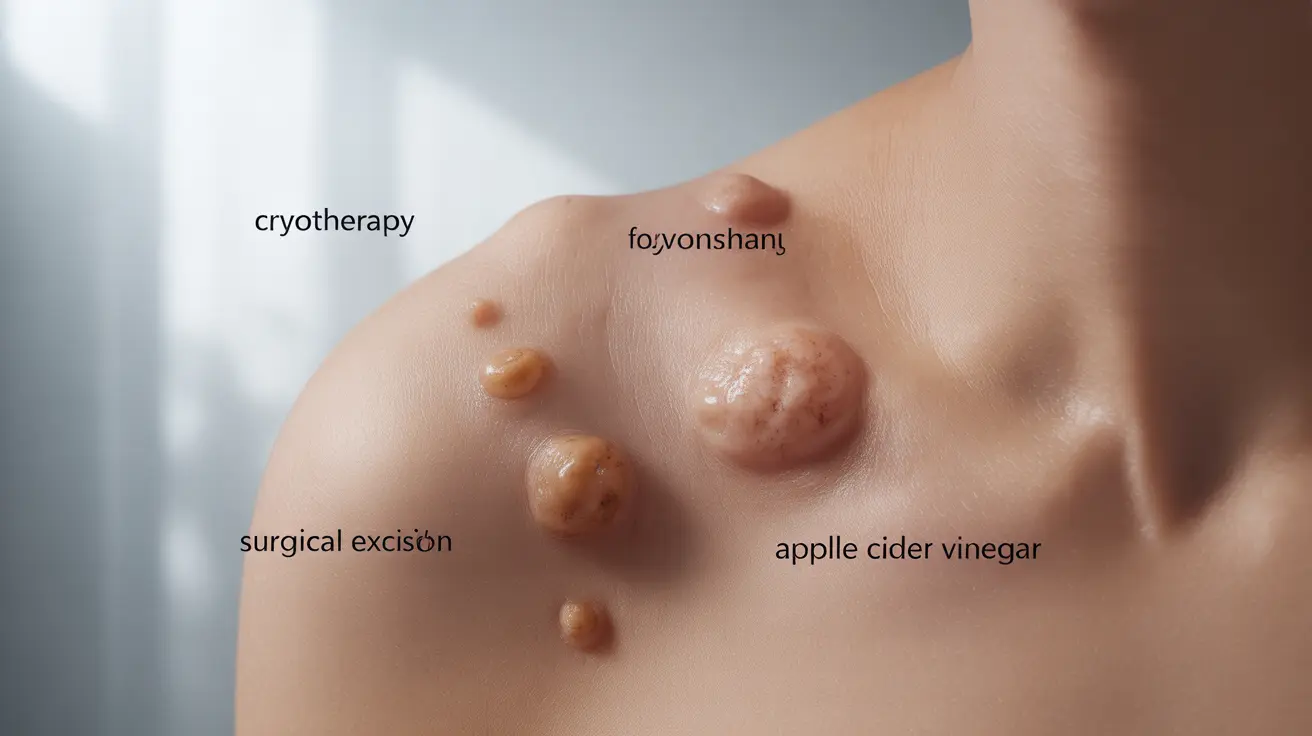Skin tags are small, harmless growths that commonly appear on the neck, armpits, groin, or other areas where skin frequently rubs against skin or clothing. While these benign growths don't typically require medical intervention, many people seek ways to remove them for cosmetic reasons. This comprehensive guide explores various methods to get rid of skin tags safely and effectively.
Understanding Skin Tags and Their Causes
Skin tags, medically known as acrochordons, are soft, flesh-colored growths that hang from the skin's surface by a small stalk. They typically develop in areas where friction occurs regularly and are more common in older adults, people who are overweight, and pregnant women due to hormonal changes.
Professional Medical Removal Options
When considering how to get rid of skin tags, medical procedures offer the safest and most reliable solutions:
- Cryotherapy (freezing)
- Surgical excision
- Cauterization (burning)
- Laser removal
These procedures are typically quick, minimally invasive, and performed under local anesthesia when necessary. They also have the advantage of being performed by healthcare professionals who can ensure proper removal while minimizing scarring risks.
Home Remedies and Natural Solutions
Apple Cider Vinegar Method
While apple cider vinegar is a popular home remedy, it's important to understand both its potential benefits and risks. The acidic nature of apple cider vinegar may help dry out the skin tag, but improper use can lead to skin irritation or chemical burns.
Other Natural Approaches
Several other natural methods are commonly suggested for skin tag removal, including:
- Tea tree oil
- Banana peel
- Raw garlic
- Vitamin E oil
However, it's crucial to note that these natural remedies have limited scientific evidence supporting their effectiveness and should be used with caution.
Safety Considerations and Precautions
Before attempting any skin tag removal method, consider these important safety guidelines:
- Never attempt to remove large skin tags at home
- Avoid removing skin tags near sensitive areas like eyes
- Watch for signs of infection such as redness, swelling, or pain
- Consult a healthcare provider if the skin tag changes in appearance
- Don't attempt removal if you have bleeding disorders or diabetes
When to See a Doctor
While many skin tags are harmless, certain situations warrant professional medical attention:
- The skin tag is particularly large or painful
- It's located in a sensitive area
- You're unsure if the growth is actually a skin tag
- There are signs of infection or inflammation
- The skin tag changes color, size, or appearance
Frequently Asked Questions
How effective and safe is apple cider vinegar for removing skin tags? Apple cider vinegar's effectiveness for skin tag removal is largely anecdotal. While some people report success, it can cause skin irritation and burns if not used properly. Medical removal methods are generally safer and more reliable.
What are the risks of using apple cider vinegar to treat skin tags at home? Risks include chemical burns, skin irritation, infection, and scarring. The acidic nature of apple cider vinegar can damage surrounding healthy skin if not properly protected.
How do you properly apply apple cider vinegar to a skin tag for removal? If choosing this method, apply petroleum jelly around the skin tag to protect surrounding skin, then apply diluted apple cider vinegar with a cotton ball for 15-20 minutes, twice daily. However, medical removal is recommended instead.
What are safer medical alternatives to remove persistent or large skin tags? Professional medical removal methods include cryotherapy, surgical excision, cauterization, and laser removal. These procedures are quick, effective, and performed under sterile conditions by trained professionals.
Are there any other natural home remedies that can help get rid of skin tags? While tea tree oil, banana peel, and other natural remedies are sometimes suggested, their effectiveness isn't scientifically proven. For safe and reliable results, professional medical removal is recommended.




